Day 1 :
Keynote Forum
Mitsunori Saito
Ryukoku University, Japan
Keynote: Novel concepts and materials for microfluidic optical devices
Time : 09:00-09:30
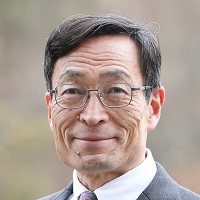
Biography:
Mitsunori Saito graduated from Kyoto University (Japan) in 1978 and received the PhD degree from Tohoku University (Japan) in 1991. After working as an associate professor at Tohoku University, he became a professor of Ryukoku University (Japan) in 1994.
Abstract:
Energy concentration is essential to create compact, efficient microfluidic optical devices. Polyethylene glycol (PEG) is a suitable fluid for this purpose with its bipolarity (molecular dissolvability), nonvolatility, and high index of refraction (waveguiding). Its distinguished feature is a bistability in the phase transition process; i.e., a mixture of two PEG types (molecular weight: 300 and 2000), for example, takes both the liquid and solid phases in the temperature range of 2‒38 °C. One can use this phase transition to pause a sample flow at a specific position in microchannels. The bistability also realizes a rewritable signboard with a PEG droplet array, since both the clear (liquid) and milk-white (solid) states are stable at room temperature. The strong scattering in the solid phase is useful to confine a light beam (photonic localization). Mirrorless lasers, which have been studied extensively with microdroplets, can be constructed with dye-dispersed PEG, since the confined fluorescence induces a stimulated emission. A bistable laser emission has been demonstrated in the phase transition process of the microfluid. The light confinement is also useful to enhance the absorbance of inorganic materials, which hardly absorb excitation or probe light particularly in a microchannel. Chemists have recently developed organic-inorganic hybrid phosphors with an enhanced excitation efficiency. Spectroscopic analysis of these hybrids needs time-resolved measurements, since both rapid and slow processes occur in organic ligands and metal ions. The time-space conversion spectral measurement is suitable for microfluidic devices, since a nanosecond resolution is attainable with no need for a large pulsed laser.
Keynote Forum
J. Michael Köhler
University Ilmenau, Germany
Keynote: Droplet-based microfluidics for exploring soil bacterial diversity
Time : 09:30-10:00
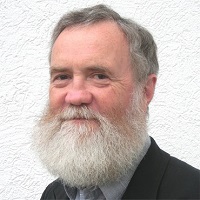
Biography:
Abstract:
Keynote Forum
Aurel Ymeti
Saxion University of Applied Sciences & Nanoalmyona BV, Netherlands
Keynote: Photonic Biosensors for Point-of-Care Applications
Time : 10:00-10:30
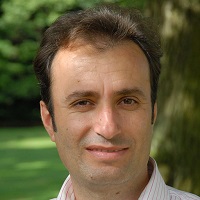
Biography:
Aurel Ymeti is cofounder and CEO of Nanoalmyona BV, a high-tech Dutch company specialized in research and technology development, project management and new business development in Hightech Systems and Materials, including integrated photonics, Lab-on-a-Chip biosensing, optoelectronics, microscopy, and nanomedicine. He earned his MSc in Theoretical Physics from the University of Tirana, Albania in 1996, and his Ph.D. in Applied Physics/Nanotechnology from the University of Twente, Netherlands in 2004, working on the development of ultrasensitive multichannel integrated photonic (bio-)sensing platforms. Subsequently, he worked as a postdoctoral research fellow at the same university on development of portable devices for staging of HIV infection in point-of-care settings, later commercialized by Immunicon/Veridex (J&J). In 2008 Aurel cofounded Ostendum, a spin-off company of the MESA+ Institute for Nanotechnology of the University of Twente, focusing on the commercialization of extremely sensitive and label-free optical analysis methods for rapid detection of micro-organisms and biomarkers based on the Lab-on-a-Chip Nanotechnology, initially invented and developed by Aurel during his Ph.D. project. As CTO at Ostendum, he was responsible for the research and technology development, product management and new business development.
Abstract:
In recent years, there have been several examples of serious virus outbreaks raising significant fears that such outbreaks can rapidly spread worldwide to become pandemics with devastating effects on populations and their social and economic development. Therefore fast, on-site, and sensitive detection of viruses is essential in detecting the onset of viral epidemics and preventing their spread. Currently available methods such as PCR and ELISA used for detection of viruses and other analytes, are time-consuming, expensive and require labor-intensive sample preparation and trained personnel for their operation. This has been the motivation behind the increased interest for the development of alternative virus/analyte detection methods. In this invited keynote, I will talk about research, development and commercialization of Lab-on-a-Chip photonic biosensors and their application for sensitive, rapid and multiplex detection of various analytes such as micro-organisms (viruses and bacteria) and biomarkers (proteins and DNA/RNA molecules). These biosensors can be applied in various application areas such as health care, e.g. for early diagnosis of cancer and heart diseases, food industry, e.g. for sensitive and fast detection of antibiotics in dairy products, national security, environmental monitoring, process technology, etc. The high sensitivity that photonic biosensors can achieve could result to less sample pre-concentration handling, which contributes to faster analysis and savings on operational costs. Moreover, these biosensors are easy-to-use and compact, offering the possibility for development of portable/handheld devices. As such, photonic biosensors are excellent candidates for fast, point-of-care analyte detection.
- microfluidics | Nanofluidics |Lab-on-Chip | BioMEMS
Location: Amsterdam
Session Introduction
John Watson
TTP Ventus Ltd, USA
Title: The Micropump’s role in the microfluidic revolution’
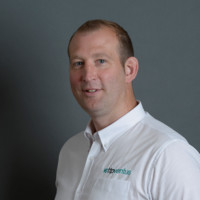
Biography:
John has over 24 years’ experience in the micro pump industry and wealth of experience in medical and life science applications. An engineer by qualification, he uses his many years of experience to support the design process and understands the importance of listening to the customers’ needs and working collaboratively with a solutions focused approach. As one of the Business Development Managers at TTP Ventus John helps to support the Disc Pump TM range of award-winning micropumps which are enabling innovation across a diverse range of microfluidic applications in the medical and life science sectors, from medical devices to the latest Point of Care (POC) diagnostic systems.
Abstract:
The microfluidic industry is currently undergoing a similar revolution to the electronics industry some 60 years ago; where the big trends were miniaturization and functional integration. As flow control is one of the key parameters within microfluidic and POC diagnostic devices; as this determines how fluids within microfluidic circuits are set in motion, designers are looking for reliable and compact solutions to their flow control needs. This is where the micropump comes in.
Sanket Goel
Birla Institute of Technology and Science , India
Title: Rapidly prototyped flexible microfluidic devices for biochemical applications
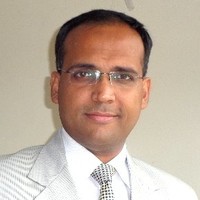
Biography:
Sanket Goel is the Head and Associate Professor with the Department of Electrical and Electronics Engineering BITS-Pilani, Hyderabad campus. Prior to this, he headed the R&D department and was an Associate Professor at the University of Petroleum & Energy Studies (UPES), Dehradun, India (2011-2015).His current research interests are MEMS, Microfluidics, Nanotechnology, Materials and Devices for Energy, Biochemical and Biomedical Applications, Science Policy and Innovation & Entrepreneurship. As a Principal Investigator, Sanket has been implementing several funded projects (from DRDO, DST, ISRO, MNRE, Government of India; UNESCO; European Commission) and has been collaborating with various groups in India and abroad.
Abstract:
Microfluidics is a well-proven and well-applied field, which has now moved to real-life fully robust and automated applications. With rigorous properties amenable to be used in a variety of areas, from energy to biomedical, microfluidics has evolved and become contemporary by incorporating various other leading methods and processes. One of the basic features of this technology is the evolution of new and novel fabrication technologies to realize on-demand flexible devices. Such technologies include 3D printing, ink-jet printing and direct laser writing, whereby a 3D microfluidic device can be fabrication in a fully one-step by feeding a 3D design to the printer in a fully robotic manner. In our lab, such devices have been developed and leveraged to realize various biochemical platform technologies. This includes microviscometer, biofuel cell and biosensing, for various sensing and monitoring applications, and energy harvesting. The presentation will encompass the development of the aforementioned teachnologies, their applications and future scope towards development of fully integrated, automated and turnkey microfluidic devices.
Richard B.M. Schasfoort
University of Twente,The Netherlands
Title: iSLICE: immunoSpot Layer Imaging of Cell Excretions
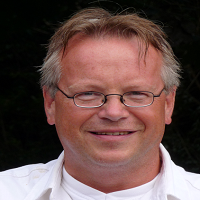
Biography:
Richard B.M. Schasfoort (1959) defended his PhD thesis for a new approach to biosensor operation in 1989. He is founder of the company IBIS Technologies BV in 1996. At the University of Twente Richard started the Biochip group and is co-author of > 100 peer reviewed papers and editor of the Handbook of Surface Plasmon Resonance (1st and 2nd edition). He is founder of the company InterFluidics BV for the purpose of imaging cell secretions.
Abstract:
Cancer patients who receive cancer immunotherapy treatments are tested using ELISpot applying single cell secretions of Peripheral Blood Mononuclear Cells (PBMC). These PBMC samples are indicative to the response of the patient’s immune system. Interleukine 2 (IL2) and/or Interferon-gamma (IFN-Æ´) secreted by stimulated T-cells, but also IL6, IL8, TNF-α play an important role in the characterization of the immune response of a patient. InterFluidics BV received from the European Union’s Horizon 2020 programme via ATTRACT funding to develop the so-called immuno Spot Layer Imaging of Cell Excretions (acronym: iSLICE). Ultra-sensitive techniques are applied to measure the secretion of single cells using an Enzyme Linked ImmunoSpot Assay (ELISpot) or FluoroSpot on capture membranes. The addition of an extra layer (or SLICE) opens new application areas for more multiplex cell secretion monitoring. In order to develop highly advanced imaging equipment e.g. using confocal fluorescent microscopy in 3D or Surface Plasmon Resonance imaging a different strategy is needed. In the presentation the technology and latest results will be shown for the iSLICE technology
Valber Pedrosa
Sao Paulo State University, Brazil,
Title: Development of microfluidic device for cell monitoring circulating tumors using gold nanoparticles
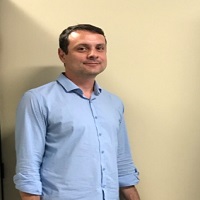
Biography:
Valber Pedrosa has completed his PhD at the age of 28 years from Sao Paulo University and postdoctoral studies from several University as, Arizona State University, auburn University, and University of Florida. He has published more than 70 papers in reputed journals and has been serving as an editorial board member of repute.
Abstract:
Cancer is an abnormal cell growth that has the potential to metastasize to other parts of the body, ultimately leading to death. Development of treatment resistance further reduces the chance of survival. While biopsy of the primary tumor can predict resistance, heterogeneity of tumor cells can result in non-detected subclones or mutations. An alternative to biopsy is to use circulating tumor cells (CTCs). Studies suggest that cellular heterogeneity within CTCs reflects the full spectrum of mutations in the primary tumor and metastatic lesions better than a single primary tumor or metastatic biopsy [1]. These cells are formed when a tumor cell detaches from the primary tumor and intravasates into the blood stream.
A typical tumor contains millions of cells that harbor genetic mutations leading them to grow, divide and invade healthy local tissue. However, as the cells proliferate, not all are located in the same space. Some cells separate from edges of a tumor and are carried by the blood or lymphatic system. Monitoring of such cells known as circulating tumor cells has awakened the interest in the biomedical and health areas, as they transmit a wide range of variety of chemical and biological signals that can produce a clinical diagnosis preventive. Therefore, the focus of this project was the development of microfluidic devices that can preserve the sample in its minimally altered state without compromising the performance and viability of CTCs. We will use specific anti-EpCam to capture CTCs where the cellular microenvironment can be precisely defined offering new perspectives on the molecular events of metabolism and the clinical analysis of invasively and accurately.
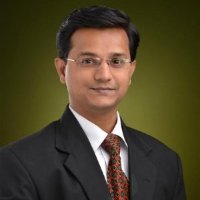
Biography:
Abstract:
In recent years, there has been a growing interests in the development and implementation of innovative solutions in the form of a miniaturised bio-sensors. In this regard, in the MEMS community emphasis has been given to design and fabricate highly sensitive, miniaturised biosensors. These bio-sensors are used for detection and measurement of either single and/or multianalyte/s at lower cost, size, weight, and power consumption. This talk attempts to review the stateof-the art MEMS sensors used for bio sensing applications. A device architecture based on the array of weakly coupled micromechanical resonators are reported. Owing to the weak coupling between the resonating elements in an array make these devices ultra-high sensitive to analytes/biomolecules. Due to the highly-precise output of such bio-sensors, resolution in the range of sub-actogram is also possible using such devices. Furthermore, role of these new class of MEMS resonant biosensors operating at ambient temperature and/or pressure is also studied.
Mohammad A. Obeid
Yarmouk University, Irbid, UK
Title: Formulation of Non-Ionic Surfactant Vesicles (NISV) prepared by microfluidics for therapeutic delivery of siRNA into cancer cells
Time : 9:45-10:15
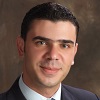
Biography:
Abstract:
RNA interference involves the degradation of a target messenger RNA through the incorporation of short interfering RNAs (siRNA) [1]. The application of siRNA based therapeutics is limited by the development of an effective delivery system. A novel type of nanoparticles known as non-ionic surfactant vesicles (NISV) are commonly used for drug delivery of various therapeutics, are relatively safe and non-expensive, have not been extensively studied for siRNA delivery [2]. Therefore, the aim of this study was to investigate the potential of NISV prepared by microfluidics for siRNA delivery.
Shaohua Ma
Tsinghua Berkeley Shenzhen Institute, P R China
Title: Microfluidics fabrication of ECM-based microstructures and their 3D printing
Time : 10:30-11:00

Biography:
Abstract:
Soft microtissues comprising living cells and the supportive matrices have been attracting growing research attention by their potential as in vitro organ models that acquires the patient’s heterogeneity, as well as building blocks for artificial organs or regenerative tissues. To recapitulate the native tissue structures and functions in vivo, the engineered microtissues shall recapitulate the mechanical and biological properties of the matrices in their native counterpart tissues. Using extracellular matrix (ECM) or ECM-derived materials is an option. However, the structural components of natural ECM are low in modulus (usually less than 1000 Pascal) and slow-gelling (generally taking tens of minutes to gel at 37°C), which may challenge the structural integrity in engineering and raise limitation in the production rate. Microfluidics has been known for its capability to produce monodisperse microstructures in high-throughput. This talk summarizes our progress on microfluidics fabrication of ECM-based microstructures and soft microtissues, and the challenges still faced by this technique. It also covers the chemical and physical functionalization of ECM-like materials to render higher compatibility with biomanufacturing, without sacrificing their biological competence.
Naresh Yandrapalli
Max Planck Institute of Colloids and Interfaces, Germany
Title: Microfluidics as a novel technology to produce bio-mimics
Time : 11:00-11:30

Biography:
Abstract:
Amit Tzur
Bar Ilan University, Israel
Title: Integrated microfluidics for protein modification discovery
Time : 11:30-12:00

Biography:
Amit Tzur has completed his PhD at Hebrew University of Jerusalem, Israel and his Post-doctoral training at Harvard Medical School, Boston MA. He is an Assistant Professor at Bar Ilan University, Israel, and a member of the Bar Ilan’s Institute of Nanotechnology and Advanced Materials (BINA) and Israel Center of Excellence (I-CORE). His research focuses on “Physiology and molecular dynamics of proliferating cells”. He has published dozens of papers in reputed journals and serving as an Editorial Board Member.
Abstract:
Protein post-translational modifications mediate dynamic cellular processes with broad implications in human disease pathogenesis. There is a large demand for high-throughput technologies supporting post-translational modifications research, and both mass spectrometry and protein arrays have been successfully utilized for this purpose. Protein arrays override the major limitation of target protein abundance inherently associated with MS analysis. This technology, however, is typically restricted to pre-purified proteins spotted in a fixed composition on chips with limited life-time and functionality. In addition, the chips are expensive and designed for a single use, making complex experiments cost prohibitive. Combining microfluidics with in situ protein expression from a cDNA microarray addressed these limitations. Based on this approach, we introduce a modular integrated microfluidic platform for multiple post-translational modifications analysis of freshly synthesized protein arrays (IMPA). The system's potency, specificity and flexibility are demonstrated for tyrosine phosphorylation, auto-phosphorylation, and ubiquitination in quasi-cellular environments. Unlimited by design and protein composition, and relying on minute amounts of biological material and cost-effective technology, this unique approach is applicable for a broad range of basic, biomedical and biomarker research.
Andreas Hutten
Bielefeld University, Germany
Title: Magnetic nanoparticles meet microfluidics
Time : 12:00-12:30

